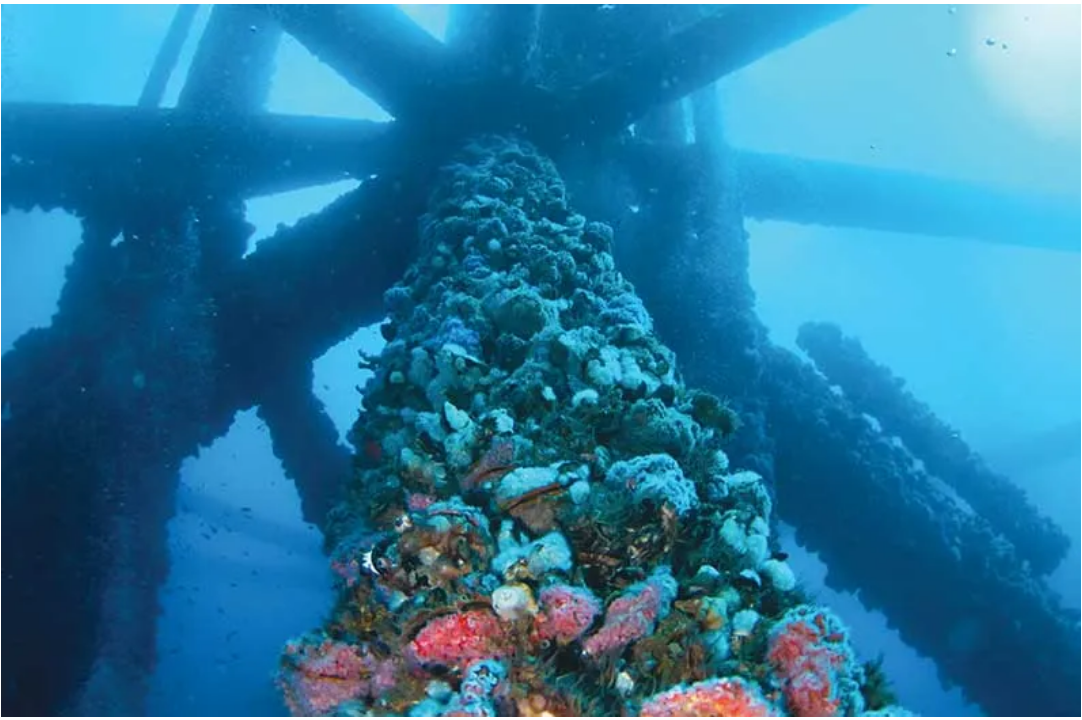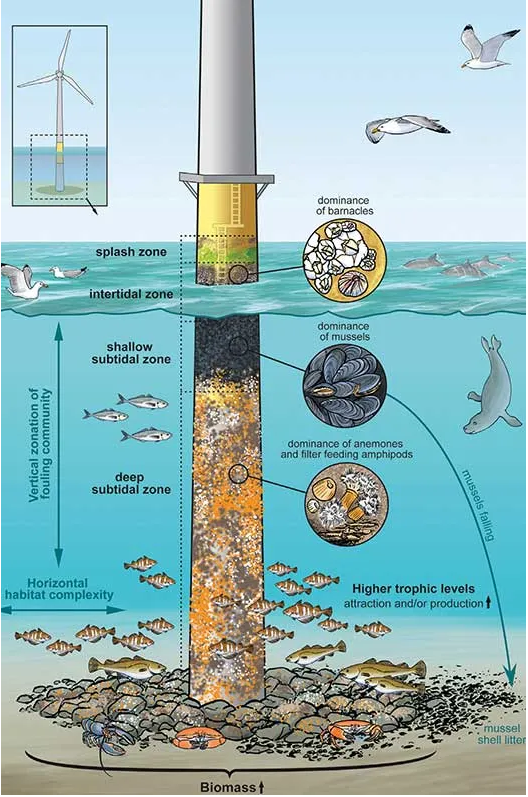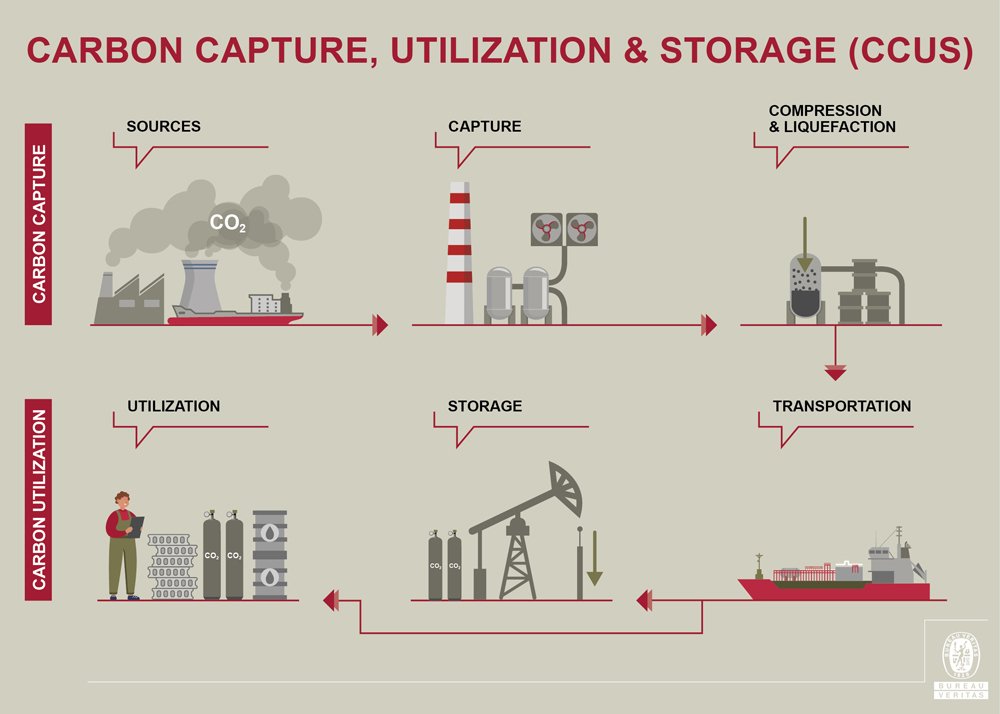Co-location & opportunities in the North Sea
Co-location in the North Sea: Study by Suzannah Walmsley and Emma Wootton
©Beusbeus/iStock
Offshore wind has established itself as a promising method for renewable energy generation, especially in the relatively shallow North Sea where wind turbines can be installed easily, and electricity can be distributed to bordering countries. We can combine our goals of generating renewable energy with sustainable aquaculture practices, known as ‘Co-location’ (also as multi-use and co-use), where two or more activities are actively being managed together whilst occupying the same areas. The idea is good in practice, but can we really implement these ideas in real world applications?
To identify potential technical or methodological adaptations which would better enable co-location in UK waters, a project was undertaken by Suzannah Walmsley and Emma Wootton of MRAG and ABPmer respectively. The study suggested that adaptations to wind turbine array layout and orientation, introduction of clear corridors and improved cable mapping would be the most suitable for supporting the concept of co-location. In addition, monitoring for cable exposure, improving cable mapping, and modifying the cables to improve their compatibility with fishing practices would be the most viable in a real-world example. Consultation with key stakeholders suggested that 57% would be willing to modify fishing activities to help achieve co-location, but adaptations to fishing gear and practices is relatively limited in its feasibility. This is because most fishers consider operations to be fully optimised, with any changes to this having potentially detrimental impacts.
Credit: Degraer, S et al (2020)
In addition to identifying adaptations, the project also aimed to evaluate the real-world feasibility of implementing these adaptations. Project methodology involved undertaking a comprehensive literature review, engaging with key stakeholders through interviews and workshops, and subsequent analysis and synthesis of data related to OWF technologies, fishing methods, potential interactions, and adaptations.
Some of the key interactions between OWFs and fishing activities were identified as:
The entanglement of fishing gear with OWF infrastructure;
Collision of fishing vessels with OWF infrastructure and;
Restrictions of manoeuvrability of fishing vessels.
The study concluded by emphasising the importance of meaningful engagements and cooperation between relevant sectors to ensure the success of co-location. Due to the complex nature of co-location approaches, each site will come with its own considerations. These will require site-specific measures rather than a one-size-fits-all approach, but improving lighting and navigational aids, as well as making cables safer and fishing-friendly will be the most feasible adaptations to support co-location.
The Netherlands has demonstrated a commitment to the trialling of multi-use spaces within OWFs, where 90km2 have been allocated off the coast of Borsselle.
An area passport for the site was developed, setting out which areas will support certain activities. Organisations that are interested in pursuing activities within the shared areas can apply for a permit for their activity type from Rijkewaterstaat, the Dutch Ministry of Infrastructure and Water Management.
Rijkewaterstaat will decide if the proposed activity aligns with the activity areas set out by the area passport, as well as considering Safety, Liability and Environmental Impact when assessing whether projects will be granted permits for their activity type. For passive fishing, permit applications will be considered by the Ministry of Agriculture, Nature and Food Quality. The knowledge gained from these multi-use spaces will be used to inform best practices for co-location and maximise productivity of our shared offshore areas.
Credit: Noordzeeloket
Co-location of OWFs and CCUS
Carbon-capture, usage and storage (CCUS) has long been considered to mitigate the accumulation of anthropogenic CO2 emissions. The opportunity for co-location of CCUS technology and OWF has been realised more recently, especially by the Crown Estate who see this co-location as a way to maximise the clean energy return from the UK’s natural heritage. To enable discussion, the Crown Estate has developed Offshore Wind and CCUS Co-Location Forum, aimed at identifying the key challenges and opportunities for co-location of OWFs and carbon capture technology. It is hoped that the forum will inform best practices for efficient use of the seabed, encourage collaboration, and engage key stakeholders.
The forum focusses on several key areas, achieved through regular meetings and discussions. These are:
Spatial characterisation and planning: Mapping areas where high-potential offshore wind and CCUS projects could potentially overlap which will inform a combined approach to future seabed planning and marine spatial prioritisation.
Best practice for simultaneous operations: Studies modelling how co-location could affect operational access to sites (e.g., maintenance and research vessels), and best practices for co-ordinating activities to reduce impacts and encourage co-location.
Wider marine planning stakeholder engagement: Modelling the impact that additional traffic created by co-location has on other sea users and highlighting opportunities to address any impact.
Opportunities for sharing resources: Analysis of whether there is a need for an integrated approach for overlapping Offshore Wind and CCUS projects, which could provide a collaborative digital framework to facilitate overlap planning opportunities, development planning, with emphasis on the importance of collaboration.
It will be some time before we see co-location approaches becoming widespread throughout the Offshore Wind industry, but it is hoped that continued co-operation and collaboration will facilitate the adoption of these approaches moving forwards.



